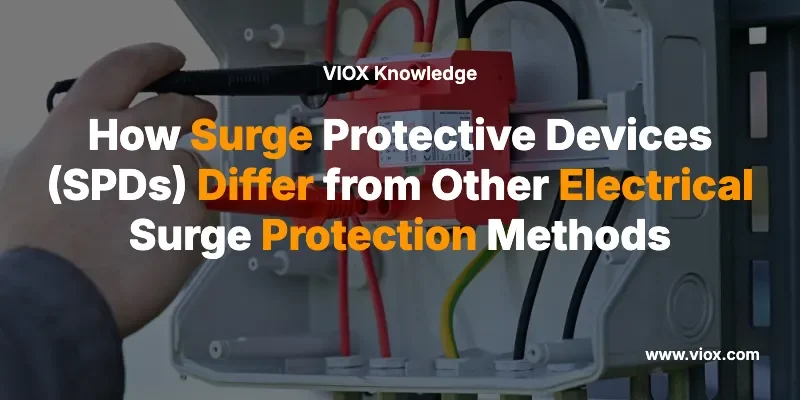Κατανόηση των συσκευών προστασίας από υπερτάσεις (SPD)
Ορισμός και Βασική Λειτουργία

A συσκευή προστασίας από υπερτάσεις (SPD) είναι μια προστατευτική συσκευή για τον περιορισμό των παροδικών τάσεων μέσω εκτροπής ή περιορισμού του ρεύματος υπερτάσεων και είναι ικανή να επαναλαμβάνει αυτές τις λειτουργίες όπως ορίζεται. Τα SPD ήταν προηγουμένως γνωστά ως Καταστολείς Υπερτάσεων Παροδικής Τάσης (TVSS) ή δευτερογενείς απαγωγείς υπερτάσεων (SSA), αλλά η ορολογία τυποποιήθηκε σε SPD με την υιοθέτηση του ANSI/UL 1449 3ης Έκδοσης το 2009.
Η βασική αρχή πίσω από τα SPD περιλαμβάνει την παράλληλη σύνδεση στο κύκλωμα τροφοδοσίας των φορτίων που προστατεύουν. Τα SPD που συνδέονται παράλληλα έχουν υψηλή σύνθετη αντίσταση. Μόλις εμφανιστεί παροδική υπέρταση στο σύστημα, η σύνθετη αντίσταση της συσκευής μειώνεται, έτσι ώστε το ρεύμα υπερτάσης να διοχετεύεται μέσω του SPD, παρακάμπτοντας τον ευαίσθητο εξοπλισμό.
Σύστημα Ταξινόμησης SPD
Σύμφωνα με τον Εθνικό Ηλεκτρικό Κώδικα (NEC) και το πρότυπο ANSI/UL 1449, οι SPD ταξινομούνται σε τρεις κύριους τύπους με βάση την τοποθεσία εγκατάστασής τους και την προβλεπόμενη εφαρμογή τους:
SPD τύπου 1: Προστασία εισόδου υπηρεσίας
Τύπος 1: Μόνιμα συνδεδεμένοι, που προορίζονται για εγκατάσταση μεταξύ του δευτερεύοντος του μετασχηματιστή σέρβις και της πλευράς γραμμής της συσκευής υπερέντασης αποσύνδεσης σέρβις (εξοπλισμός σέρβις). Ο κύριος σκοπός τους είναι να προστατεύουν τα επίπεδα μόνωσης του ηλεκτρικού συστήματος από εξωτερικές υπερτάσεις που προκαλούνται από κεραυνούς ή μεταγωγή συστοιχίας πυκνωτών κοινής ωφέλειας.
Βασικές προδιαγραφές:
– Ρεύμα ρεύματος: κρουστικό ρεύμα 10/350 µs
– Χειρισμός ρεύματος: 50.000 έως 200.000 αμπέρ
– Εγκατάσταση: Εξοπλισμός εισόδου σέρβις
– Πρωτογενής προστασία από άμεσα χτυπήματα κεραυνού
SPD τύπου 2: Προστασία πίνακα διανομής
Τύπος 2: Μόνιμα συνδεδεμένο, που προορίζεται για εγκατάσταση στην πλευρά φορτίου της συσκευής υπερέντασης αποσύνδεσης σέρβις (εξοπλισμός σέρβις), συμπεριλαμβανομένων των θέσεων στον πίνακα επωνυμίας. Ο κύριος σκοπός τους είναι να προστατεύουν τα ευαίσθητα ηλεκτρονικά και τα φορτία που βασίζονται σε μικροεπεξεργαστές από την υπολειμματική ενέργεια κεραυνού, τις υπερτάσεις που παράγονται από τον κινητήρα και άλλα εσωτερικά παραγόμενα συμβάντα υπερτάσεων.
Βασικές προδιαγραφές:
– Ρεύμα κύματος: 8/20 µs κύμα ρεύματος
– Χειρισμός ρεύματος: 20.000 έως 100.000 αμπέρ
– Εγκατάσταση: Πίνακες διανομής και κέντρα φορτίου
– Πρωτογενής προστασία για ηλεκτρικά συστήματα κτιρίων
ΕΕΠ τύπου 3: Προστασία σημείου χρήσης
Τύπος 3: Διακόπτες τάσης σημείου χρήσης εγκατεστημένοι σε ελάχιστο μήκος αγωγού 10 μέτρων (30 πόδια) από τον ηλεκτρικό πίνακα σέρβις έως το σημείο χρήσης.
Βασικές προδιαγραφές:
– Ρεύμα ρεύματος: Συνδυασμός τάσης 1,2/50 μs και ρεύματος 8/20 μs
– Χειρισμός ρεύματος: 5.000 έως 20.000 αμπέρ
– Εγκατάσταση: Κοντά σε προστατευμένο εξοπλισμό
– Τελικό επίπεδο τοπικής προστασίας
Άλλες μέθοδοι προστασίας από ηλεκτρικές υπερτάσεις
Συστήματα αδιάλειπτης παροχής ρεύματος (UPS)
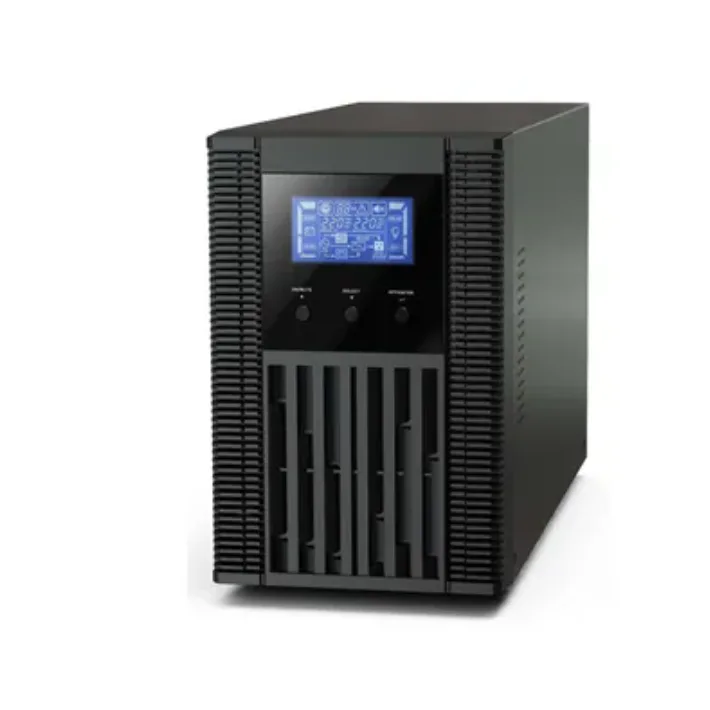
Τα συστήματα UPS παρέχουν ολοκληρωμένη προστασία από την τάση που εκτείνεται πέρα από την απλή προστασία από υπερτάσεις. Αυτές οι συσκευές παρακολουθούν συνεχώς την εισερχόμενη τάση και ανταποκρίνονται σε προβλήματα ποιότητας ισχύος μεταβαίνοντας σε τροφοδοσία από την μπαταρία κατά τη διάρκεια διακοπών ή σοβαρών διαταραχών.
Χαρακτηριστικά προστασίας UPS:
– Χρόνος απόκρισης: 2-10 χιλιοστά του δευτερολέπτου για μεταφορά ισχύος
– Πεδίο προστασίας: Επίπεδο μεμονωμένου εξοπλισμού
– Τρέχων χειρισμός: Μεταβλητή με βάση την χωρητικότητα της μονάδας
– Πρόσθετες λειτουργίες: Εφεδρική μπαταρία, ρύθμιση ισχύος, ρύθμιση τάσης
– Κόστος Σειρά: $100-5.000+ ανάλογα με τη χωρητικότητα
Περιορισμοί UPS για προστασία από υπερτάσεις:
– Αργότερος χρόνος απόκρισης σε σύγκριση με τα SPD
– Περιορισμένη ικανότητα διαχείρισης υπερτασικού ρεύματος
– Απαιτείται συντήρηση και αντικατάσταση της μπαταρίας
– Δεν έχει σχεδιαστεί για υπερτάσεις κεραυνών υψηλής ενέργειας
Προστατευτικά υπερτάσεων πολύπριζου έναντι βασικών πολύπριζων
Βασικά πολύπριζα
Ένα πολύπριζο είναι ένα μπλοκ ηλεκτρικών πριζών που επιτρέπει την τροφοδοσία πολλαπλών ηλεκτρικών συσκευών από μία μόνο ηλεκτρική πρίζα. Τα βασικά πολύπριζα δεν παρέχουν προστασία από υπερτάσεις, παρά την οπτική ομοιότητα με τα προστατευτικά από υπερτάσεις.
Χαρακτηριστικά:
– Λειτουργία: Μόνο διανομή ισχύος
– Προστασία: Διακόπτης μόνο για υπερφορτώσεις
– Χρόνος απόκρισης: Δεν υπάρχει δυνατότητα προστασίας από υπερτάσεις
– Κόστος: $10-30
– Εφαρμογή: Μη κρίσιμες συσκευές όπου δεν απαιτείται προστασία από υπερτάσεις
Πολύπριζα προστασίας από υπερτάσεις καταναλωτών
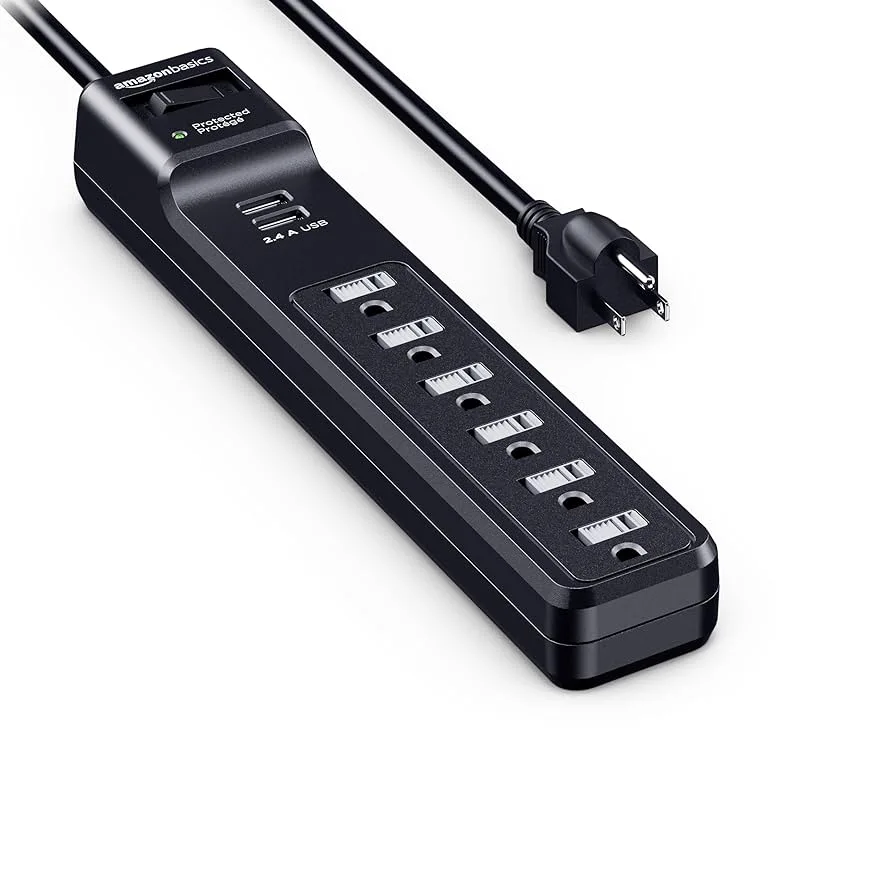
Η κύρια διαφορά μεταξύ ενός προστατευτικού υπέρτασης και ενός πολύπριζου είναι ότι το προστατευτικό υπέρτασης περιέχει ένα MOV. Το MOV εκτρέπει τις επιβλαβείς ηλεκτρικές υπερτάσεις από τις συνδεδεμένες συσκευές.
Χαρακτηριστικά:
– Χειρισμός ρεύματος: συνήθως 1.000-4.000 joules
– Χρόνος απόκρισης: 25 νανοδευτερόλεπτα (βάσει MOV)
– Πεδίο προστασίας: Μόνο συσκευές που συνδέονται απευθείας στην ταινία
– Τάση σύσφιξης: 330-600 βολτ
– Διάρκεια ζωής: Υποβαθμίζεται με κάθε συμβάν υπερτάσεων
Βαρίστορ μεταλλικών οξειδίων (MOV)
Τα βαρίστορ μεταλλικού οξειδίου είναι αντιστάσεις που εξαρτώνται από την τάση και αποτελούν την βασική τεχνολογία στα περισσότερα καταναλωτικά προστατευτικά υπερτάσεων. Τα βαρίστορ MOV περιέχουν μια κεραμική μήτρα κόκκων οξειδίου του ψευδαργύρου με όρια κόκκων που σχηματίζουν συνδέσεις διόδων.
Λειτουργία MOV:
– Φυσιολογικές συνθήκεςΥψηλή αντίσταση με ελάχιστη ροή ρεύματος
– Συνθήκες υπερτάσεωνΗ κατάρρευση της χιονοστιβάδας δημιουργεί χαμηλή διαδρομή αντίστασης
– Χρόνος απόκρισης: 25 νανοδευτερόλεπτα
– Τρέχων χειρισμός: 1.000-20.000 αμπέρ ανάλογα με το μέγεθος
Περιορισμοί MOV:
– Προοδευτική υποβάθμιση με επαναλαμβανόμενη έκθεση σε υπερτάσεις
– Τελικά απαιτείται αντικατάσταση μετά από πολλαπλές υπερτάσεις
– Καμία ένδειξη κατάστασης προστασίας σε βασικές υλοποιήσεις
Δίοδοι καταστολής παροδικής τάσης (TVS)
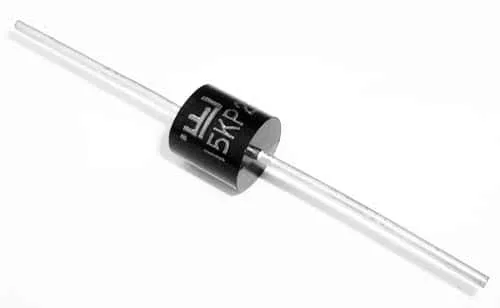
Οι δίοδοι TVS είναι εξειδικευμένες δίοδοι χιονοστιβάδας σχεδιασμένες για εξαιρετικά γρήγορη προστασία από υπερτάσεις σε ευαίσθητα ηλεκτρονικά.
Χαρακτηριστικά διόδου TVS:
– Χρόνος απόκρισης: 1 πικοδευτερόλεπτο (το ταχύτερο διαθέσιμο)
– Τρέχων χειρισμός: 10.000-30.000 αμπέρ μέγιστου παλμού
– Ακρίβεια τάσηςΠολύ ακριβή επίπεδα σύσφιξης
– Διάρκεια ζωήςΔεν έχει επιπτώσεις γήρανσης, εξαιρετική μακροπρόθεσμη σταθερότητα
– ΕφαρμογήΠροστασία σε επίπεδο PCB σε ηλεκτρονικό εξοπλισμό
Πλεονεκτήματα έναντι των MOV:
– Καμία υποβάθμιση με την πάροδο του χρόνου
– Εξαιρετικά γρήγορη απόκριση για προστασία από ηλεκτροστατική εκκένωση (ESD)
– Ακριβή χαρακτηριστικά σύσφιξης τάσης
– Αξιόπιστη λειτουργία καθ’ όλη τη διάρκεια ζωής της συσκευής
Σωλήνες εκκένωσης αερίου (GDT)
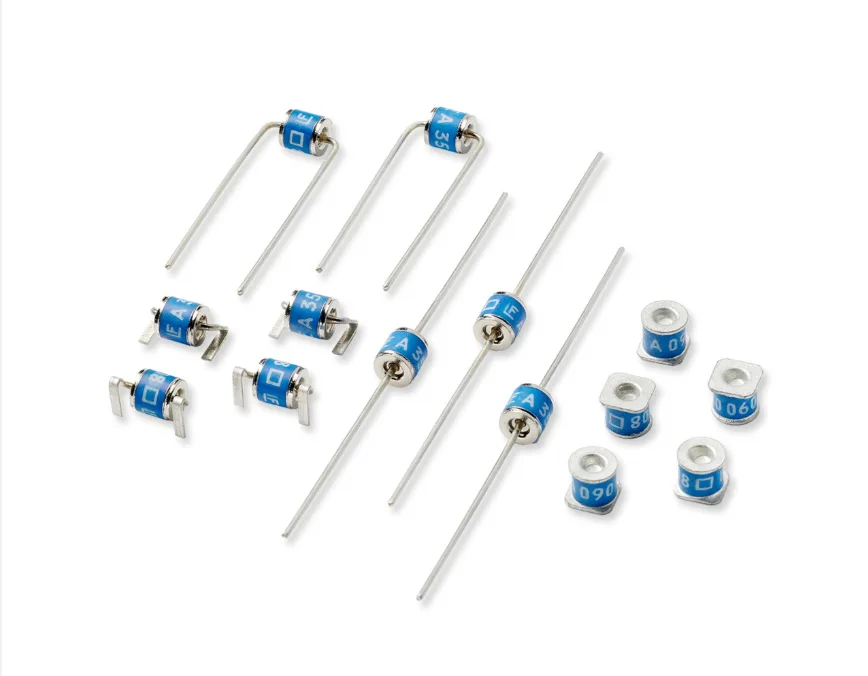
Οι σωλήνες εκκένωσης αερίου λειτουργούν ως διακόπτες ελεγχόμενοι από τάση χρησιμοποιώντας αρχές αδρανούς εκκένωσης αερίου, που χρησιμοποιούνται συνήθως σε τηλεπικοινωνιακό εξοπλισμό.
Χαρακτηριστικά GDT:
– Χρόνος απόκρισης: <1 μικροδευτερόλεπτο
– Τρέχων χειρισμός: 10.000-40.000 αμπέρ
– Κανονική κατάστασηΠολύ υψηλή σύνθετη αντίσταση, ελάχιστη χωρητικότητα
– Ενεργοποιημένη κατάσταση: Διαδρομή αγωγιμότητας χαμηλής σύνθετης αντίστασης
– ΕφαρμογέςΤηλεπικοινωνίες, προστασία υψηλής τάσης
Διακόπτες κυκλώματος και προστασία ασφαλείας
Παραδοσιακοί Διακόπτες Κυκλώματος
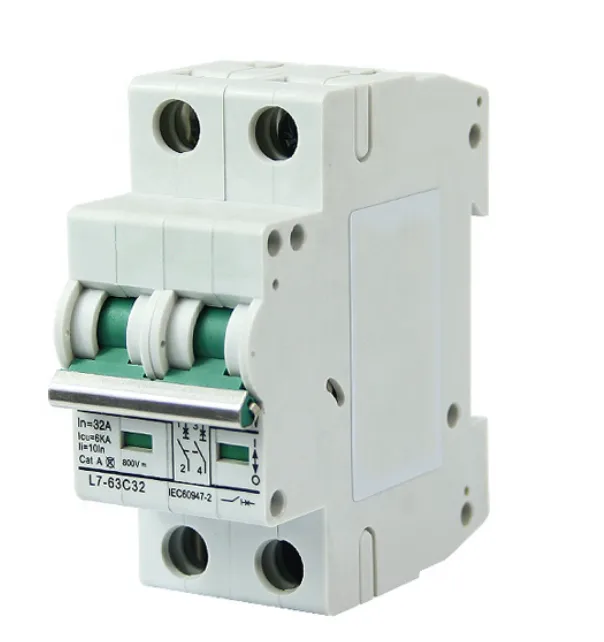
Οι διακόπτες κυκλώματος παρέχουν προστασία από υπερένταση, αλλά δεν έχουν σχεδιαστεί για προστασία από υπερτάσεις.
Προδιαγραφές διακόπτη κυκλώματος:
– ΛειτουργίαΠροστασία από υπερένταση και βραχυκύκλωμα
– Χρόνος απόκρισης: 16-100 χιλιοστά του δευτερολέπτου
– Προστασία από υπερτάσεις: Κανένα (πολύ αργό για αιχμές τάσης)
– Τρέχων χειρισμός: Ονομαστική ένταση ρεύματος για συνεχή λειτουργία
– ΕφαρμογήΓενική προστασία ηλεκτρικών κυκλωμάτων
Προστασία GFCI και AFCI
– GFCIΠροστασία από σφάλμα γείωσης (ευαισθησία 5 mA, απόκριση 25-30 ms)
– AFCIΠροστασία από σφάλματα τόξου για πρόληψη πυρκαγιάς
– ΛειτουργίαΠροστασία ασφαλείας, όχι προστασία από υπερτάσεις
– Απαιτήσεις: Υποχρεώνεται από την NEC σε συγκεκριμένες τοποθεσίες
Συστήματα Αντικεραυνικής Προστασίας
Αλεξικέραυνα
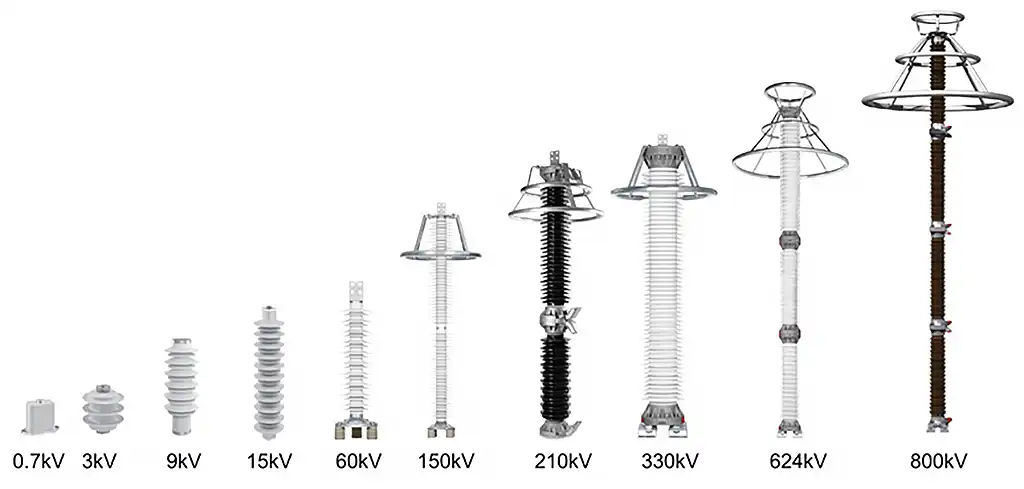
Τα αλεξικέραυνα προστατεύουν τα συστήματα μεταφοράς και διανομής από άμεσα πλήγματα κεραυνού και μεταβατικά φαινόμενα διακοπής.
Χαρακτηριστικά αλεξικέραυνου:
– Τρέχων χειρισμός: 100.000+ αμπέρ
– Επίπεδα τάσηςΤάσεις συστήματος μετάδοσης (>1000V)
– Χρόνος απόκρισης: Μικροδευτερόλεπτα
– ΕφαρμογήΣυστήματα μεταφοράς και διανομής κοινής ωφέλειας
– Κόστος: $1.000-10.000+ για συσκευές κλάσης μετάδοσης
Αλεξικέραυνα (Αεροσταθμοί)
– Λειτουργία: Παρέχετε την προτιμώμενη διαδρομή χτύπημα κεραυνού
– Προστασία: Δομική προστασία κτιρίου
– ΟλοκλήρωσηΛειτουργεί με σύστημα γείωσης
– Τρέχων χειρισμόςΠλήρες ρεύμα κεραυνού (έως 200.000 αμπέρ)
Εξοπλισμός Ποιότητας και Κλιματισμού Ισχύος
Ρυθμιστές τάσης και σταθεροποιητές
Οι ρυθμιστές ισχύος επικεντρώνονται στην ποιότητα ισχύος σε σταθερή κατάσταση και όχι στην προστασία από παροδικές υπερτάσεις.
Χαρακτηριστικά ρύθμισης τάσης:
– ΛειτουργίαΔιατηρήστε σταθερά επίπεδα τάσης (±1-5%)
– Χρόνος απόκρισης: Χιλιοστά του δευτερολέπτου για διόρθωση τάσης
– Τύπος προστασίαςΠροστασία από υπέρταση και υπέρταση
– ΕφαρμογήΠεριοχές με κακή ποιότητα ηλεκτρικού ρεύματος από την εταιρεία κοινής ωφέλειας
– Κόστος: $100-1.000+ ανάλογα με τη χωρητικότητα
Μετασχηματιστές απομόνωσης
– ΛειτουργίαΗλεκτρική απομόνωση και μείωση υπερτάσεων
– Προστασία: Εξασθένηση κύματος κοινής λειτουργίας (-60dB ή καλύτερη)
– Χειρισμός τάσης: Είσοδος παλμού 30kV, έξοδος 10kV (τυπική)
– ΕφαρμογήΙατρικός εξοπλισμός, ευαίσθητα όργανα
Φίλτρα γραμμής ρεύματος και προστασία από ηλεκτρομαγνητικές εκρήξεις (EMI)
– Λειτουργία: Φιλτράρει ηλεκτρομαγνητικές παρεμβολές και ηλεκτρικό θόρυβο
– Λειτουργία: Συνεχές φιλτράρισμα αγόμενων ηλεκτρομαγνητικών σημάτων (EMI/RFI)
– Εξαρτήματα: Επαγωγείς, πυκνωτές, πυρήνες φερρίτη
– ΕκτασηΣυμπληρώνει την προστασία από υπερτάσεις, μην την αντικαθιστάτε
SPD έναντι άλλων μεθόδων προστασίας από ηλεκτρικές υπερτάσεις
| Μέθοδος | Λειτουργία | Απάντηση | Τοποθεσία | Τρέχον | Τάση | Διάρκεια ζωής | Κόστος | Εφαρμογές |
|---|---|---|---|---|---|---|---|---|
| SPD Τύπος 1 | Κύμα κεραυνού | 25 ns | Εισαγωγή υπηρεσίας | 50-200 kA | 700-1500V | Υψηλή ανθεκτικότητα | Υψηλή | Πίνακες σέρβις |
| SPD Τύπος 2 | Διανομή | 25 ns | Διανομή | 20-100 kA | 600-1200V | Υψηλή ανθεκτικότητα | Μεσαίο | Υποκατάστημα κυκλώματα |
| SPD Τύπος 3 | Σημείο χρήσης | 25 ns | Κοντά στον εξοπλισμό | 5-20 kA | 330-600V | Μέτρια ανθεκτικότητα | Χαμηλή | Ευαίσθητο ηλεκτρικό |
| Συστήματα UPS | Εφεδρική τροφοδοσία ρεύματος | 2-10 ms | Επίπεδο εξοπλισμού | Μεταβλητή | ±3-5% | Εξαρτάται από την μπαταρία | Υψηλή | Κρίσιμος εξοπλισμός |
| Διακόπτες κυκλώματος | Υπερένταση | 16-100 ms | Διανομή | Μεταβλητή | Κανένας | Πολύ υψηλή | Χαμηλή | Γενικό κύκλωμα |
| MOV | Σφιγκτήρας τάσης | 25 ns | Επίπεδο συσκευής | 1-20 kA | Μεταβλητή | Υποβαθμίζει | Πολύ χαμηλό | Προστασία συστατικού |
| Δίοδοι TVS | Γρήγορη μεταβατική περίοδος | 1 ps | Επίπεδο PCB | 10-30 kA | Πολύ ακριβής | Χωρίς γήρανση | Χαμηλή | Ηλεκτρονική |
| Απαλλαγή αερίου | Υψηλή τάση | <1 µs | Επίπεδο εξοπλισμού | 10-40 kA | Υψηλή τάση | Πολύ υψηλή | Μεσαίο | Τηλεπικοινωνίες |
| Σύλληψη αστραπής | Προστασία από κεραυνούς | Μικροδευτερόλεπτα | Μετάδοση | 100+ kA | επίπεδα kV | Πολύ υψηλή | Υψηλή | Συστήματα ισχύος |
| Κατάσταση ισχύος | Ποιότητα ισχύος | Συνεχής | Επίπεδο εξοπλισμού | Εξαρτάται από το φορτίο | ±5-10% | Υψηλή | Υψηλή | Ευαίσθητος εξοπλισμός |
| Απομόνωση Trans | Ηλεκτρική μόνωση | Συνεχής | Επίπεδο εξοπλισμού | Εξαρτάται από το φορτίο | Καλή απομόνωση | Πολύ υψηλή | Υψηλή | Ιατρικός εξοπλισμός |
Πλήρης Σύγκριση: SPD έναντι Άλλων Μεθόδων Προστασίας
Ανάλυση Χρόνου Απόκρισης
Υπερταχεία προστασία (Picoseconds):
– Δίοδοι TVS: 1 πικοδευτερόλεπτο – Ιδανικές για ηλεκτροστατική εκκένωση (ESD) και γρήγορες μεταβατικές φαινόμενες
Γρήγορη προστασία (νανοδευτερόλεπτα):
– SPD (όλοι οι τύποι): 25 νανοδευτερόλεπτα – Εξαιρετικό για υπερτάσεις τάσης
– MOVs: 25 νανοδευτερόλεπτα – Κατάλληλο για μέτριες υπερτάσεις
Μέτρια ταχύτητα (μικροδευτερόλεπτα):
– Σωλήνες εκκένωσης αερίου: <1 μικροδευτερόλεπτο – Κατάλληλο για συμβάντα υψηλής ενέργειας
Αργή απόκριση (χιλιοστά του δευτερολέπτου):
– Συστήματα UPS: 2-10 χιλιοστά του δευτερολέπτου – Επαρκές για μεταφορά ισχύος
– GFCI/AFCI: 25-30 χιλιοστά του δευτερολέπτου – Εφαρμογές με επίκεντρο την ασφάλεια
– Διακόπτες κυκλώματος: 16-100 χιλιοστά του δευτερολέπτου – Μόνο προστασία υπερέντασης
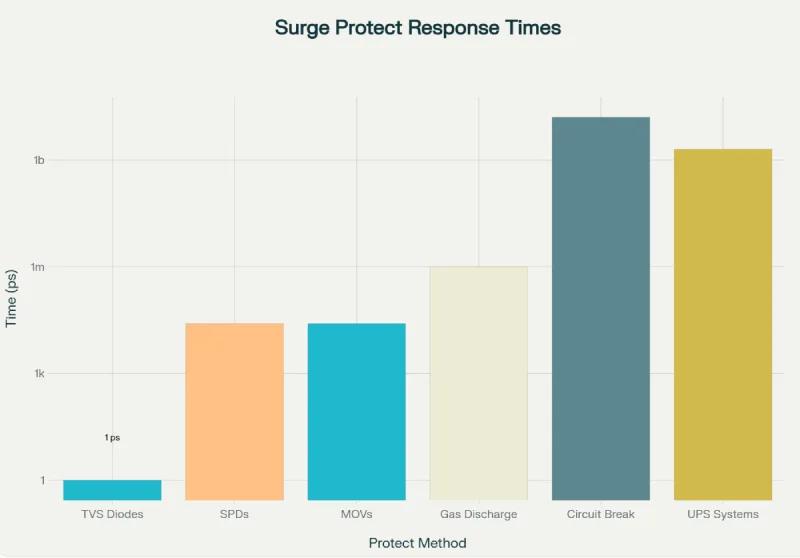
Σύγκριση τρέχουσας χωρητικότητας χειρισμού
Υψηλότερη Ενέργεια (100+ kA):
– Αλεξικέραυνα: Προστασία σε επίπεδο μετάδοσης
– SPD Τύπος 1: Προστασία εισόδου σέρβις 50-200 kA
Υψηλή Ενέργεια (20-100 kA):
– SPD Τύπος 2: Προστασία διανομής 20-100 kA
– Σωλήνες εκκένωσης αερίου: προστασία τηλεπικοινωνιών 10-40 kA
Μέτρια Ενέργεια (5-30 kA):
– SPD Τύπος 3: Προστασία σημείου χρήσης 5-20 kA
– Δίοδοι TVS: Ηλεκτρονική προστασία ακριβείας 10-30 kA
Περιορισμένη Ενέργεια (1-20 kA):
– Προστατευτικά υπερτάσεων καταναλωτών: Προστασία συσκευής 1-4 kA
– MOVs: Προστασία εξαρτημάτων 1-20 kA
Χωρίς προστασία από υπερτάσεις:
– Βασικά πολύπριζα: Μόνο ονομαστική τιμή διακόπτη κυκλώματος
– Διακόπτες κυκλώματος: Προστασία από υπερένταση, χωρίς χειρισμό υπερτάσεων
Τοποθεσία εγκατάστασης και ενσωμάτωση συστήματος
Ιεραρχική εγκατάσταση SPD
Τα SPD ακολουθούν μια συστηματική προσέγγιση εγκατάστασης που παρέχει συντονισμένη προστασία:
1. ΕΕΠ τύπου 1Είσοδος υπηρεσίας – πρώτη γραμμή άμυνας
2. ΕΔΠ τύπου 2Πίνακες διανομής – προστασία κεντρικού κτιρίου
3. ΕΕΠ τύπου 3Σημείο χρήσης – τελική προστασία εξοπλισμού
Άλλες Εγκαταστάσεις Μεθόδων
– Συστήματα UPS: Επίπεδο εξοπλισμού, απαιτεί συνδέσεις φορτίου
– Προστατευτικά υπερτάσεων καταναλωτών: Επίπεδο συσκευής, φορητό
– Προστασία κυκλώματοςΠίνακες διανομής, με επίκεντρο την ασφάλεια
– Προστασία εξαρτημάτων: Επίπεδο PCB ή εντός εξοπλισμού
– Εξοπλισμός Ποιότητας ΙσχύοςΕπίπεδο εξοπλισμού, συγκεκριμένες εφαρμογές
Πρότυπα και Κανονιστική Συμμόρφωση
Πλαίσιο Προτύπων SPD
– ANSI/UL 1449: Πρωτεύον βορειοαμερικανικό πρότυπο SPD
– Σειρά IEC 61643Διεθνή πρότυπα SPD
– Άρθρο 285 του NECΑπαιτήσεις εγκατάστασης για SPD
– Υποχρεωτικές απαιτήσειςΤο NEC 2020+ απαιτεί SPD για οικιστικές μονάδες
Άλλα Πρότυπα Μεθόδου
– Συστήματα UPS: UL 1778, σειρά IEC 62040
– Διακόπτες κυκλώματος: UL 489, σειρά IEC 60947
– Προστατευτικά υπερτάσεων καταναλωτών: UL 1449 (Ταξινόμηση Τύπου 3)
– Προστασία εξαρτημάτωνΔιάφορα πρότυπα ειδικά για κάθε εξάρτημα
Οικονομικές και πρακτικές σκέψεις
Ανάλυση Κόστους-Οφέλους
Οφέλη Επένδυσης SPD:
– Προστασία ολόκληρου του συστήματος έναντι κόστους ανά συσκευή
– Μεγάλη διάρκεια ζωής με ελάχιστη συντήρηση
– Συμμόρφωση με τους κανονισμούς για μία μόνο εγκατάσταση
– Προστασία καλωδίωσης κτιρίου και εντοιχισμένων συσκευών
Συνολικό Κόστος Ιδιοκτησίας:
– Ενιαίο έντυπο δηµόσιας διαβούλευσης τύπου 2Η εγκατάσταση $200-800 plus προστατεύει ολόκληρο το σπίτι
– Πολλαπλές συσκευές προστασίας από υπερτάσεις καταναλωτών: $20-100 έκαστο, απαιτούνται πολλαπλές μονάδες
– Συστήματα UPS: $100-5.000+ συν κόστος αντικατάστασης μπαταρίας
– Ζημιά από υπερτάσειςΜία μέση βιομηχανική εγκατάσταση χάνει 14,39 δισεκατομμύρια λίρες ετησίως
Απαιτήσεις συντήρησης
Χαμηλή συντήρηση:
– SPD: Παρακολούθηση κατάστασης, περιοδικός έλεγχος
– Δίοδοι TVS: Δεν απαιτείται συντήρηση
– Διακόπτες κυκλώματος: Περιοδικοί έλεγχοι
Υψηλή Συντήρηση:
– Συστήματα UPS: Αντικατάσταση μπαταρίας κάθε 3-5 χρόνια
– MOVs: Αντικατάσταση μετά από φθορά
– Βελτιωτικά Ισχύος: Αντικατάσταση φίλτρου, βαθμονόμηση
Συστάσεις ειδικά για την εφαρμογή
Οικιακές εφαρμογές
Πρωτογενής προστασία: SPD τύπου 2 στον κύριο πίνακα (απαιτείται NEC 2020+)
Δευτερεύουσα προστασία: SPD τύπου 3 για ευαίσθητα ηλεκτρονικά
Εφεδρικό ρεύμα: UPS για κρίσιμο εξοπλισμό (υπολογιστές, ιατρικές συσκευές)
Εμπορικές και βιομηχανικές εφαρμογές
Πρωτογενής προστασία: SPD τύπου 1 ή τύπου 2 στην είσοδο υπηρεσίας
Προστασία Διανομής: SPD τύπου 2 σε υποπίνακες
Προστασία εξοπλισμού: SPD και UPS τύπου 3 για κρίσιμα συστήματα
Ειδική Προστασία: Βελτιωτικά ισχύος για ευαίσθητες διεργασίες
Τηλεπικοινωνίες και κέντρα δεδομένων
Προστασία AC: Συντονισμένη εγκατάσταση SPD (Τύποι 1, 2, 3)
Προστασία DC: Εξειδικευμένα SPD για τηλεπικοινωνιακές γραμμές
Δεδομένα υψηλής ταχύτητας: Δίοδοι TVS για προστασία γραμμής σήματος
Κρίσιμα Συστήματα: UPS με εφεδρική μπαταρία για αδιάλειπτη λειτουργία
Σύνοψη Βασικών Διαφορών
SPD έναντι προστατευτικών υπερτάσεων καταναλωτών
– Διαχείριση ενέργειας: Τα SPD χειρίζονται 20-200 kA έναντι 1-4 kA για καταναλωτικές μονάδες
– Πεδίο προστασίας: Προστασία ολόκληρου του συστήματος έναντι προστασίας μεμονωμένων συσκευών
– Εγκατάσταση: Μόνιμη τοποθέτηση σε πάνελ έναντι φορητής πρίζας
– Πρότυπα: Επαγγελματικά ηλεκτρικά πρότυπα έναντι προτύπων καταναλωτικών προϊόντων
– Διάρκεια ζωής: Σχεδιασμένο για μεγάλη διάρκεια ζωής έναντι αντικατάστασης μετά από μεγάλες υπερτάσεις
Συστήματα SPD έναντι συστημάτων UPS
– Κύρια λειτουργία: Προστασία από υπερτάσεις έναντι εφεδρικής τροφοδοσίας
– Χρόνος απόκρισης: 25 νανοδευτερόλεπτα έναντι 2-10 χιλιοστών του δευτερολέπτου
– Διαχείριση ενέργειας: Υψηλό ρεύμα υπερτάσεων έναντι περιορισμένης προστασίας από υπερτάσεις
– Συντήρηση: Απαιτείται ελάχιστη αντικατάσταση μπαταρίας έναντι αντικατάστασης μπαταρίας
– Κόστος: Εφάπαξ εγκατάσταση έναντι συνεχούς κόστους μπαταρίας
SPD έναντι εξοπλισμού ποιότητας ισχύος
– Τύπος προστασίας: Προστασία από παροδικές υπερτάσεις έναντι ποιότητας ισχύος σταθερής κατάστασης
– Ταχύτητα απόκρισης: Νανοδευτερόλεπτα έναντι χιλιοστών του δευτερολέπτου
– Εφαρμογή: Γεγονότα υπερτάσεων έναντι συνεχούς βελτίωσης ισχύος
– Εγκατάσταση: Παράλληλη σύνδεση έναντι εγκατάστασης σε σειρά
Συμπέρασμα
Οι συσκευές προστασίας από υπερτάσεις αντιπροσωπεύουν μια εξειδικευμένη και εξαιρετικά αποτελεσματική προσέγγιση στην προστασία από ηλεκτρικές υπερτάσεις που διαφέρει θεμελιωδώς από άλλες μεθόδους προστασίας στη συστηματική εφαρμογή τους, τη συμμόρφωση με τους κανονισμούς και τις ολοκληρωμένες δυνατότητες προστασίας. Ενώ άλλες μέθοδοι, όπως συστήματα UPS, διακόπτες κυκλώματος, MOV, δίοδοι TVS και ρυθμιστές ισχύος, παίζουν σημαντικό ρόλο στην ηλεκτρική προστασία, οι συσκευές SPD προσφέρουν μοναδικά πλεονεκτήματα μέσω:
– Τυποποιημένο σύστημα ταξινόμησης (Τύποι 1, 2, 3) για συντονισμένη προστασία
– Γρήγοροι χρόνοι απόκρισης (25 νανοδευτερόλεπτα) για αποτελεσματική σύσφιξη κύματος
– Υψηλή ικανότητα χειρισμού ρεύματος (20.000-200.000 αμπέρ) για σοβαρά συμβάντα υπερτάσεων
– Ολοκληρωμένο κανονιστικό πλαίσιο με συγκεκριμένες απαιτήσεις της NEC
– Συστηματική ιεραρχία εγκατάστασης για την προστασία ολόκληρου του κτιρίου
Το βασικό διαφοροποιητικό στοιχείο είναι ότι τα SPD παρέχουν βασική προστασία από υπερτάσεις για ολόκληρα ηλεκτρικά συστήματα, ενώ άλλες μέθοδοι συνήθως προστατεύουν μεμονωμένες συσκευές ή αντιμετωπίζουν διαφορετικά ηλεκτρικά προβλήματα. Οι σύγχρονες ηλεκτρικές εγκαταστάσεις επωφελούνται περισσότερο από μια προσέγγιση πολυεπίπεδης προστασίας που συνδυάζει σωστά συντονισμένα SPD με κατάλληλες συμπληρωματικές μεθόδους προστασίας με βάση τις συγκεκριμένες απαιτήσεις της εφαρμογής.
Η κατανόηση αυτών των διαφορών επιτρέπει στους επαγγελματίες ηλεκτρολόγους να σχεδιάζουν ολοκληρωμένες στρατηγικές προστασίας που πληρούν τόσο τους στόχους απόδοσης όσο και τις κανονιστικές απαιτήσεις, βελτιστοποιώντας παράλληλα τις επενδύσεις προστασίας σε οικιακές, εμπορικές και βιομηχανικές εφαρμογές.
Σχετικό
Τι είναι μια συσκευή προστασίας από υπερτάσεις (SPD)
Πληροφορίες κοινότητας: Κορυφαίες συμβουλές SPD (Συσκευή προστασίας από υπερτάσεις) του Reddit
Πώς να επιλέξετε το σωστό SPD για το σύστημα ηλιακής ενέργειας
Συσκευές προστασίας από υπερτάσεις: Πλεονεκτήματα και μειονεκτήματα
Συσκευές προστασίας από υπερτάσεις έναντι απαγωγέων υπερτάσεων

